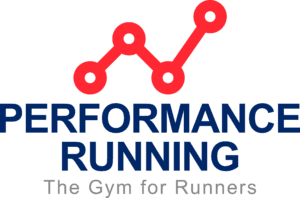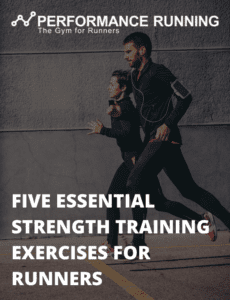Congratulations to everyone that toed the line this past weekend at Chicago or Twin Cities or any other race. Often, just making it to the starting line of a marathon can be a challenge.
Many of you enjoyed PR’s. Congratulations! You worked hard and your work paid off.
Some of you didn’t PR. Congratulations to you as well. You also likely worked very hard, but it just wasn’t your day. Why? I’ve raced a lot of marathons. Some days were great, others sucked. My goal is always to learn from each race. What went right or what didn’t go right. Here are some things I’ve learned over the years:
Tapering vs Peaking: This is a big one. I’ve learned that it’s important to peak going into your race. For years I subscribed to the old school tapering method of 75% of my mileage 3 weeks out, 50% mileage 2 weeks out, and 25% mileage 1 week out. I also took extra days off and was careful to run pretty easy and rest my legs going into a race. With the advances in technology, I’ve noticed how important it is for me to think of this time as a peak phase instead of a taper phase. While my overall training load decreases during this period, my fitness level is still increasing or at least maintaining. I’m still keeping my pace the same or even slightly faster on my runs while decreasing the length of the runs. I’m focusing on improving or at least maintaining my fitness level while minimizing the stress on my body. I’m still running the same number of days, with the exception of maybe an extra day off the week of the race, I’m just shortening the distance slightly. I’m getting in a good workout each week. I’ve learned by doing this that I go into the race feeling fresh and fit. I used to feel very sluggish during my taper, and often felt that way on race day as well. Increase your fitness and decrease your load and you’ll get to race day feeling ready antsy and ready to fly.
Sickness: Out of all the races I’ve run, I bet I’ve been sick 75% of the time. I usually get sick a week or two prior, about the time I start my taper phase. Drastic changes in our training are thought to have an effect on our immune system. Following the peaking process described above seems to help me stay healthy going into a race.
Stress: Additional stresses in your life have an impact on your ability to recover. These stresses could be work related, family, grief, or many other forms of stress. Sometimes this just isn’t avoidable, but I do what I can to limit the amount of additional stress leading up to a race.
Sleep: We all know how important sleep is to our recovery. Ideally, you are getting enough sleep to allow your body to be able to recover. Focus on getting good, quality sleep leading up to a race.
Nutrition: I’d say this could be the most important thing I’ve learned about improving my fitness level and therefore my racing ability. This is a very long topic and I won’t get into it too much in this post, but fueling properly leading up to and during a race can have an enormous impact on your performance. I recently raced a trail marathon and ran out of fuel at mile 21. My body noticeably slowed down until I was able to obtain fuel at mile 23 at which point I was able to resume my race pace and finish strong.
Strength training: Maintaining a consistent strength training program is important for all of us, but even more important as we age. Consistently participating in a running specific resistance exercise program will provide you with the strength needed to stay strong at the end of the race. Strength training should be something that is done all year, with the exception of a week or two prior to your race.
Pacing: It’s easy to get caught up in the excitement at the beginning of a race and run too fast without even realizing it. This is the most difficult thing for me personally to fix. It’s tough to control the adrenaline and competitiveness at the beginning of a race. History will always show that negative splitting a marathon is the best way to run your fastest marathon. This is something that is so hard to do, but is important if you want to have your best race possible. If you look at the winning times of the Twin Cities Marathon and the Chicago Marathon you’ll see that the male winners in both races negative split and the female winner of Chicago negative split and the female winner of TCM was close but positive split by about a half minute. Sometimes our goal is just too aggressive for our fitness level and we go out at the pace we intended to, but our fitness level doesn’t allow us to maintain this pace for the duration of the race.
Weather: This is a big one and one that we can’t control. Some of us run better when it’s cold. Some of us prefer it a little warmer. Sunday at TCM would have been too cold for my liking. My body performs better when the temps are in the 50’s. Once the weather dips into the 30’s and 40’s, my performance declines noticeably. We’re all different here, it’s a factor that affects our race and we don’t have any control over. In 2008, I was trained to break 3 hours in the marathon. All of my workouts showed my fitness level being in line with a sub-3 marathon. Marathon morning was in the 70’s in the starting corral and in the high 80’s by race end. I knew that I wouldn’t be able to run the pace I’d hoped to in that heat, so I adjusted from the start and ran a 3:10. I’m pretty sure if I would’ve attempted to run sub-3 pace, I would’ve crashed and burned and run a much slower time that day. Sometimes we just have to accept the weather we are given that day and adjust accordingly.
These are a few examples of things I’ve learned in the past 20 years of marathon racing. I’d be happy to sit down and discuss any of these points in greater detail with any of you and to try to help you learn from your race. Whether you had a PR, or you didn’t have the race you hoped for, learn what you can from the race so you’re able to continue improving in the future.




Recent Comments